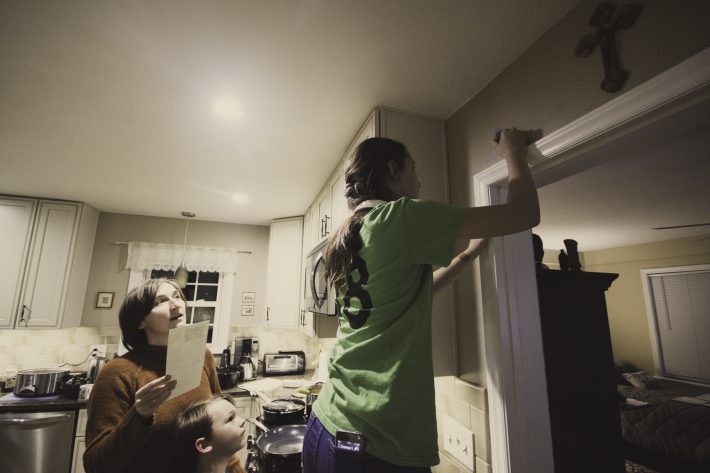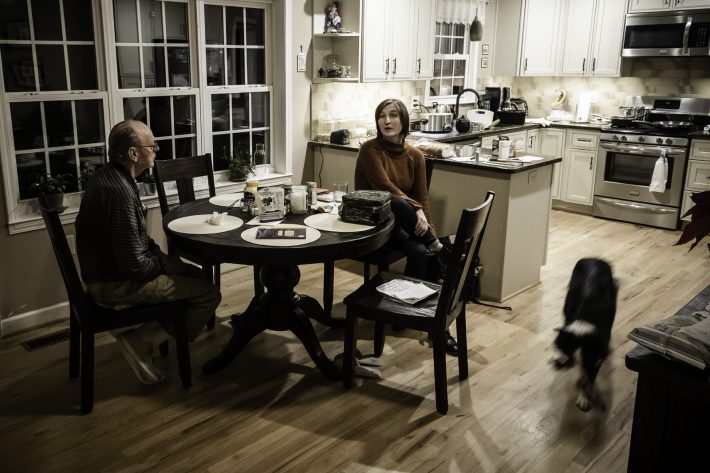I first noticed it at a friend’s house. Above one of the doors were some numbers and letters, and I thought it was perhaps a marking left behind during construction — some kind of measurement or something. Of course, the house in question was long finished: it was not one of the half-built, “raw” houses that dotted the road that ran through Lipnica. This was a fully completed house, but I didn’t really think about that. I just didn’t have any idea why someone would write something in chalk on the wall.
And then I married a Polish Catholic and found out: it’s the indication of the blessing of the house.

I’ve grown much more skeptical in the last few years and tend to have to fight the temptation to view these things as I once did, which is not all that positively. To begin with, the priest is supposed to do it. Our priest leaves a basket of blessed chalk in the church narthex with a card that includes instructions and the prayers. This year, we didn’t get the blessed chalk, so we just used chalk that we bought at Walmart. Does that make a difference? Ontologically, it should: if not blessing it didn’t make a difference, why bless it to begin with? And what exactly does blessing the chalk do? Is it possible to discern the difference between blessed and unblessed chalk?
There’s not even consensus about the origin and meaning of what one writes in chalk:
The origin of this ritual comes from eastern Europe where homeowners mark their doors with the sign 20+C+M+B=(year). CMB are the initials of the three Wise Men: Caspar, Melchoir and Balthasar who are remembered on the Feast of Epiphany.
Another interpretation given of this sign is: Christus Mansionem Bededicat (Christ Blesses this Mansion). We welcome you to bless your home for the New Year using the blessed chalk and rite given below:
One person makes the inscription with chalk above the door (20+C+M+B+14), while another proclaims the corresponding words: The three Wise Men, Caspar, Melchoir, and Balthasar followed the star of God’s son who became Man (20) two thousand years ago. (+) May Christ bless our dwelling (+) and remain with us throughout the New Year.
If we don’t know what it means, doesn’t that kind of make it, well, useless?
Perhaps. Perhaps not. Perhaps what’s more important is the unity involved in the process, both in the blessing itself and in the overarching idea. It keeps us thinking about the house as not just as a building, a location, but as a home, an idea.
